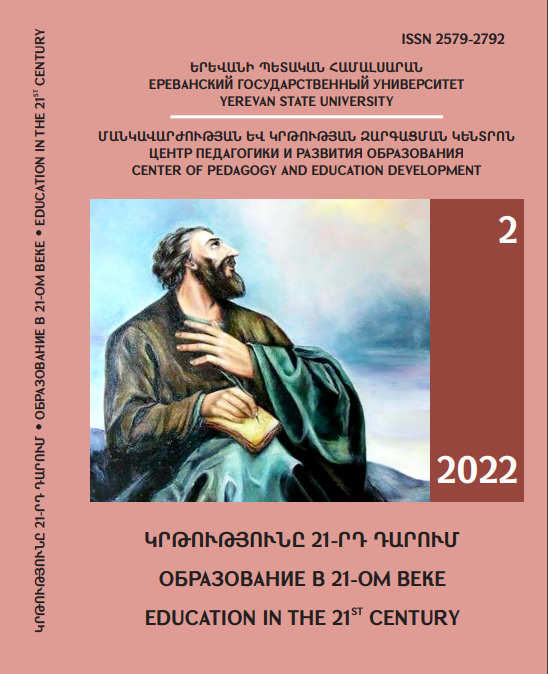THE FEATURES OF TEACHING NEGATIVE PREPOSITIONS AND CONJUNCTIONS IN THE GERMAN LANGUAGE
DOI:
https://doi.org/10.46991/educ-21st-century.v8i2.8664Keywords:
prepositions and conjunctions with negative meaning, comparative method, general negation, partial negation, syntactical function, semantic fieldAbstract
Summary
This article discusses some peculiarities of teaching German negative prepositions and conjunctions. Teaching the means of negation in German sometimes causes certain difficulties from the methodological point of view, since it is not always possible to express the whole extent of these means in Armenian, which sometimes leads to misperception, and often to translation violations. For this reason, in the process of learning, applying the comparative method and combining the relevant facts of the German and Armenian languages, emphasizing the common features and, in some cases, the differences between the two languages, it is possible to contribute to a more effective comprehension of the presented material, and also to show the conditions of the equivalent transferring this language material from one language to another. For a better comprehension of theoretical material can also be given relevant examples from the belles-lettres in the teaching process.
So, in order to teach more effectively the various semantic and functional peculiarities of the negative prepositions and conjunctions of German great importance is attached to the use of comparative method and the need to include relevant facts of Armenian in the teaching process.
References
Օգտագործված գրականության ցանկ
Աբրահամյան Ս. Չթեքվող խոսքի մասերը և նրանց բառական ու քերականական հատկանիշների փոխհարաբերությունը ժամանակակից հայերենում.- Երևան: ՀՍՍՀ ԳԱ լեզվի ինստիտուտ, 1965, 567 էջ
Աճառյան Հր. Լիակատար քերականություն հայոց լեզվի, հ. IV, Երևան, ՀՍՍՀ ԳԱ, 1965, 543 էջ
Մարգարյան Ալ., Հայոց լեզվի քերականություն: Ձևաբանություն, Երևան: Երևանի համալս. հրատ., 2004, 625 էջ
Булах Н. А. Средства отрицания в немецком литературном языке /Яросл. гос. пед. ин-т им К. Д. Ушинского. Учен. зап., вып. 57, Ярославль, 1962, 334 с.
Шендельс Е.И. Система средств выражения отрицания в современном немецком языке // Иностр яз. в школе, 1957, № 3, с. 9-22.
Helbig G. Zur Rolle des kontrastiven Sprachvergleichs für den Fremdsprachenunterricht, DaF 1/1976, 13, S. 19–27
James, C. (1992): „The monitor model“ and the role of the first language. In: Hans Goebl; Peter H. u.a. 515 – 525.
König, E. (1996): Kontrastive Grammatik und Typologie. In: Deutsch – typologisch. Hg. Ewald Lang; Gisela Zifonum, Berlin, New-York.
Sternemann, R. (1983): Einführung in die kontrastive Linguistik. Leipzig: VEB Verlag Enzyklopädie.
Wekker, H. (1992): On contrastive linguistics and second language aquisition. In: Christian Mair, Manfred Markus (Hg.), 279-292.
Downloads
Published
How to Cite
Issue
Section
License
Copyright (c) 2022 Naira Shachilvyan

This work is licensed under a Creative Commons Attribution-NonCommercial 4.0 International License.

